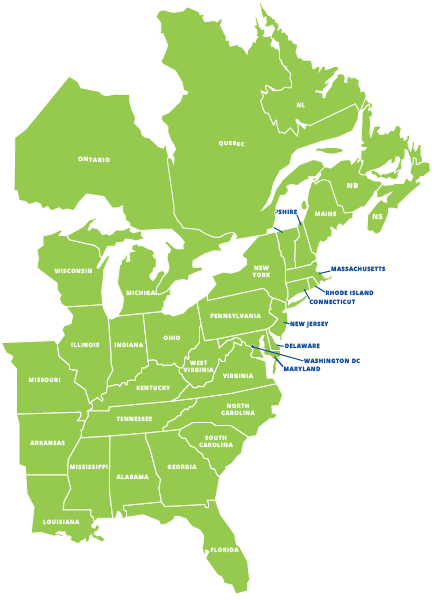In any veterinary, boarding, or shelter environment, kennels aren’t just equipment—they’re essential infrastructure. But even the highest-quality kennels can’t perform at their best without proper use and maintenance from your team.
Clients expect two things above all else: safe environments and hygienic conditions for their pets. Delivering on that promise starts with your staff. By investing in clear, consistent training around kennel care and safety, you not only improve animal welfare—you increase operational efficiency, prevent costly mistakes, and build trust with pet owners.
Here’s how to implement training protocols that work—and why they matter.
Step #1: Build and Communicate a Clear Cleaning Protocol
A well-defined cleaning protocol is the foundation of safe and sanitary kennel operations. It should be simple, repeatable, and visible to all staff—especially during shift changes or busy intake periods.
To make your cleaning protocol stick:
- Post printed copies in key areas (e.g., kennel wings, supply closets, breakrooms)
- Use clear, color-coded signage for clean vs. dirty zones
- Assign tools to specific areas (separate mops, buckets, vacuums, etc.)
- Include daily, weekly, and outbreak-specific procedures
Review protocols regularly—ideally every quarter or during your safety training calendar. Ask your team what’s working and what isn’t. Your frontline staff often have valuable insight into inefficiencies or missed steps.
The best protocols evolve with your team, your patient population, and your facility.
Step #2: Train for the Kennels You Actually Use
Not all kennels are the same—and your training shouldn’t be, either. For example, raised dog kennels with tempered glass doors require different cleaning tools and chemicals than standard stainless-steel enclosures. Your staff should be trained on:
- The materials in your facility and how to care for them properly
- The differences between routine disinfecting and outbreak response
- Safe product usage, including contact times and toxicity considerations (especially around cats)
If your facility uses stainless steel kennels—and we strongly recommend you do—they’re naturally resistant to rust, bacteria, and odor absorption. Still, improper cleaning practices can reduce their lifespan or effectiveness. Even the best kennel system requires regular upkeep, and proper training ensures you protect that investment.
Step #3: Make Disinfection a Daily, Not Optional, Practice
Cleaning is not the same as disinfecting—and both are essential. Here’s the general process every staff member should be trained to follow:
- Remove all visible waste (urine, feces, food, fur).
- Clean with soap or kennel-safe detergent, then rinse.
- Dry surfaces fully before applying disinfectant.
- Disinfect according to label instructions—pay attention to contact time.
- Rinse or wipe down again, if needed, and let air dry.
Remind staff that skipping steps—especially drying or rushing contact times—can render the disinfectant ineffective. Additionally, certain cleaners, like phenol-based products, can be harmful to cats. Always tailor training based on species sensitivity and clearly label all cleaning supplies accordingly.
Protective equipment such as gloves, goggles, and masks should be available and used based on the task. Proper hygiene isn’t just about animal safety—it’s about keeping your team healthy, too.
And don’t forget: depending on your location, local or state regulations may dictate sanitation standards and training documentation. Stay informed and compliant.
Step #4: Prioritize Worker Safety as Much as Cleanliness
Animal care professionals face physical risk daily—from bites and scratches to slips, escapes, and musculoskeletal strain. Safety training should be as routine as kennel cleaning.
Integrate the following practices into your training:
- Use outward-opening kennel doors to prevent entrapment
- Teach body language awareness and fear-free handling techniques
- Emphasize proper restraint protocols and transfer procedures
- Require non-slip footwear in all animal-contact zones
- Schedule annual (or biannual) safety refreshers for all team members
Your team’s ability to assess risk and act accordingly protects everyone: the animals, the staff, and your liability as a business owner.
Why It All Matters: Better Care, Better Outcomes, Better Business
Clean, well-maintained kennels aren’t just about appearance—they’re about prevention, safety, and reputation. When your staff knows how to use your equipment properly and understands why protocols matter, your entire operation runs more smoothly.
That means:
- Healthier animals with fewer infections
- Safer staff with fewer incidents and injuries
- Confident pet owners who see professionalism in every corner of your facility
In other words, strong training translates to stronger client retention, better reviews, and more reliable operations.
Equip Your Team for Success with Direct Animal
At Direct Animal, we design and build kennel systems that are intuitive to use, durable under daily wear, and easy to clean—because we know your team has enough to manage already. Our stainless steel kennels, dog room dividers, and other custom solutions help you uphold the highest standards of hygiene and safety—without sacrificing comfort for the animals in your care.
Ready to upgrade your facility or optimize how your staff interacts with your equipment? Contact us for a free consultation. We’ll help you find the right system for your business—and support the people who make it run.




